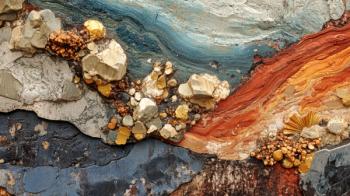
- Special Issues-11-01-2019
- Volume 34
- Issue 11
Serial Femtosecond Crystallography (SFX) combined with an X-ray Free Electron Laser (XFEL) for Determination of Protein Structure with Reduced Sample Volume
Serial femtosecond crystallography is a promising new technique for protein structure determination, where a liquid stream containing protein crystals is intersected with a high-intensity X-ray free electron laser beam that is 109 times brighter than traditional synchrotron X-ray sources. We were recently able to interview Prof. Alexandra Ros, a FACSS Innovation Award winner from the 2018 SciX conference regarding her research work on this subject.
Serial femtosecond crystallography is a promising new technique for protein structure determination, where a liquid stream containing protein crystals is intersected with a high-intensity X-ray free electron laser beam that is 109 times brighter than traditional synchrotron X-ray sources. While the crystals diffract and immediately after are destroyed by the intense X-ray free electron lasers (XFELs) beam, the resulting diffraction patterns can be recorded with state-of-the-art detectors. Powerful new data analysis methods have been developed, allowing a team to analyze these diffraction patterns and obtain electron density maps and detailed structural information of proteins. The method is specifically appealing for hard-to-crystallize proteins, such as membrane proteins. The technique is able to yield high-resolution structural information from small micro- or nanocrystals, thus reducing the contribution of crystal defects and avoiding tedious (if not impossible) growth of large crystals as is required in traditional synchrotron based crystallography. We were recently able to interview Prof. Alexandra Ros, a FACSS Innovation Award winner from the 2018 SciX conference regarding her research work on this subject.
You have stated that all currently available X-ray free electron lasers (XFELs) are pulsed and since the protein suspensions are typically injected in a continuous flow, sample injected in-between the XFEL’s pulses is wasted. As an example, you have stated that the traditional approach can lead to up to 99 percent of sample wasted and would require about 1 gram of purified protein for a full data set recording. How is what you have accomplished in your current approach, different from what others have done previously?
There are indeed other approaches to reducing sample waste, which all come at a price, such as either being too slow for very high XFEL repetition rates, not being compatible with time-resolved crystallography, not being compatible with many classes of proteins, or introducing large background. We base our technique on a very successful method of sample delivery to an XFEL beam accomplished with a so-called gas dynamic virtual nozzle forming a jet of the sample stream. Protein crystals suspended in solution can be jetted with this approach and it is useful for a large variety of proteins that can be grown in solutions of relatively low viscosity. Our method is fully compatible with the injection through a GDVN and delivers droplets of crystal laden sample intersected by an immiscible oil phase. The droplets reach the XFEL beam only when it fires, so oil is wasted but not precious sample. Our method thus requires little to no adjustment compared to non-droplet approaches for the crystallographer and additionally can be adapted to time-resolved crystallography techniques, where sample requirements is a limiting factor. Also, our approach is compatible with all current operating XFEL facilities.
Would you explain for our readers what developments make the high-intensity XFEL beam a billion times brighter than traditional synchrotron X-ray sources. How did the combination of serial femtosecond crystallography and high-intensity X-ray free electron laser take place? Why is this an optimum approach to take in solving the protein sampling problem?
High intensity XFELs are linear accelerators, creating an electron beam which is “wiggled” by undulators. During their path through the long, linear undulators a self-amplification process is induced, which leads to exponential growth and eventually high intensity X-ray lasing. The XFEL approach requires its own sample delivery, which is typically not practiced at Synchrotron sources. Because the XFEL beam is so intense, it destroys every crystal it hits, but, a diffraction pattern is still recorded. This was termed the “diffract before destroy” principle. Thousands of diffraction patters are required to obtain information about protein structures, such that the sample needs to be replenished and delivered to the pulsed XFEL beam quickly. An established way to do this is via the flow focusing technology (also known as gas dynamic virtual nozzle (GDVN) technology), and our droplet generation method was thus explicitly developed to be compatible with it.
You have stated that while the protein crystals diffract and immediately after are destroyed by the intense XFEL beam, the resulting diffraction patterns can be recorded with state-of-the-art detectors. Would you explain the unique characteristics of these detection systems and how they differ from previous instruments?
Each experiment end station has a detector that is adapted to a particular set of scientific experiments. Some detectors are commercial X-ray cameras, others are specifically developed by researchers to meet specific requirements, for example in time resolution or sensitivity. At the newly opened European XFEL for example a completely new detector was developed, which allows us to record diffraction images at megahertz (106 Hz, MHz) frequencies, as the pulses are delivered in bunches spaced less than a microsecond. While the bunches repeat at 10 Hz, an extremely fast detector is needed.
What are some of the key details of the new powerful data analysis tools that have been developed to analyze the diffraction patterns and electron density maps to derive more detailed structural information of proteins?
In contrast to synchrotrons, where diffraction is recorded in a series of rotations on the same crystal, diffraction recorded from XFELs renders partial reflections – one from each crystal, and requires a sophisticated, novel data analysis method. Thousands of partial diffractions are typically recorded for a full data set and the new data analysis methods require Monte Carlo methods to obtain structure factors and determine the underlying structure.
In your work you interleaved sample-laden liquid “slugs” within sacrificial liquid “slugs”, to create a fast-moving liquid microjet having the sample present only during exposure to the femtosecond laser pulses (10-12 second in duration). What main challenges did you face in developing this method or approach?
There are several challenges. The major challenge stems from the synchronization with the XFEL pulses. The droplets are currently generated upstream of the nozzle, and while they are generated at the repetition frequency of the XFEL, they might lag in phase. The adjustment of the phase was our major concern and we propose to solve it with electrical stimulation of the droplet release. We have developed 3D-printed devices that allow the integration of the microfluidic components as well electrical triggering facilitated through conductive device components as well as hard and software components for synchronization. Another important factor that is easily underestimated is the requirement for any samples delivery – droplet-based or not - to be compatible with high pressures, very similar to typical HPLC pressures. Therefore, all newly developed components must withstand these high pressures and be compatible with the workflow of an XFEL experiment.
What measurement improvements in structural elucidation, speed of analysis, detection limit, or sample handling have you been able to achieve with your new method?
One can probably mention two areas, where serial crystallography with XFELs has a major impact: the ability to determine structures of membrane proteins with high resolution. Membrane proteins can be composed of several tens of different protein units and contain co-factors, which makes crystallization of crystals with little defects extremely difficult, but is required for traditional crystallography approaches. Serial femtosecond crystallography (SFX) with XFELs does not require the growth of large crystals, in fact protein crystals may be only 10 micrometers (µm) in size or smaller. The second area relates to time resolved crystallography, where we aim in capturing snapshots of structural changes, for example during light induced or substrate induced reactions. There have been at first, impressive demonstrations for light induced reactions with photosystems for example, but also with other proteins such as cytochrome C oxidase recently. The ultimate goal of the time resolved studies is to obtain a molecular movie, which allows us to follow the entire reaction path.
What do you anticipate is your next area of research in this field; what would be your next steps in this work?
One of our major efforts right now is the demonstration of the sample saving approach at XFELs for a relevant protein. We have chosen to structurally characterize an enzyme which is believed to be a target for novel antibiotics. This will however depend on beam time allocation, which is granted through a committee of experts at each XFEL facility. The next step for us will then be the integration of droplet generators within one 3-D printed form piece with the sample delivery nozzles to reduce the footprint of the entire assembly, but also to eliminate perturbing factors influencing droplet generation and triggering. Eventually we would like to combine the sample saving approach with time resolved crystallography, where the sample needs are aggravated, since every time point requires a large amount of protein crystals. This is a major limitation in time-resolved SFX with XFELs, which we hope to overcome with the integration approaches.
References
(1) C. Kupitz et al., Serial time-resolved crystallography of photosystem II using a femtosecond X-ray laser, Nature, 513(7517), 261 (2014).
(2) A. Ros, and B.G. Abdallah, Methods, systems and apparatus for microfluidic crystallization based on gradient mixing. U.S. Patent Application 15/510,126, Arizona State University (2017).
(3) A. Ros, and B.G. Abdallah, Methods, systems and apparatus for microfluidic crystallization based on gradient mixing. U.S. Patent Application 10/166,542, Arizona State University (2019).
Alexandra Ros is an associate professor in the Arizona State University School of Molecular Sciences, and faculty member of the Center for Applied Structural Discovery (CASD) at the Biodesign Institute. Dr. Ros received her Diploma in Chemistry from the Ruprecht-Karls University in Heidelberg, Germany, and her PhD from the Swiss Federal Institute of Technology, Lausanne, Switzerland. Her current research interests include migration mechanisms in the micro- and nanoenvironment, single cell analysis, surface design and developing microfluidic tools for crystallography.
Articles in this issue
about 6 years ago
Spectroscopy November 2019 X-Ray Spectroscopy Methods & Applicationsabout 6 years ago
Applying EDXRF to Agricultural Analysisabout 6 years ago
Studying Gallstones and Kidney Stones with WDXRFNewsletter
Get essential updates on the latest spectroscopy technologies, regulatory standards, and best practices—subscribe today to Spectroscopy.




